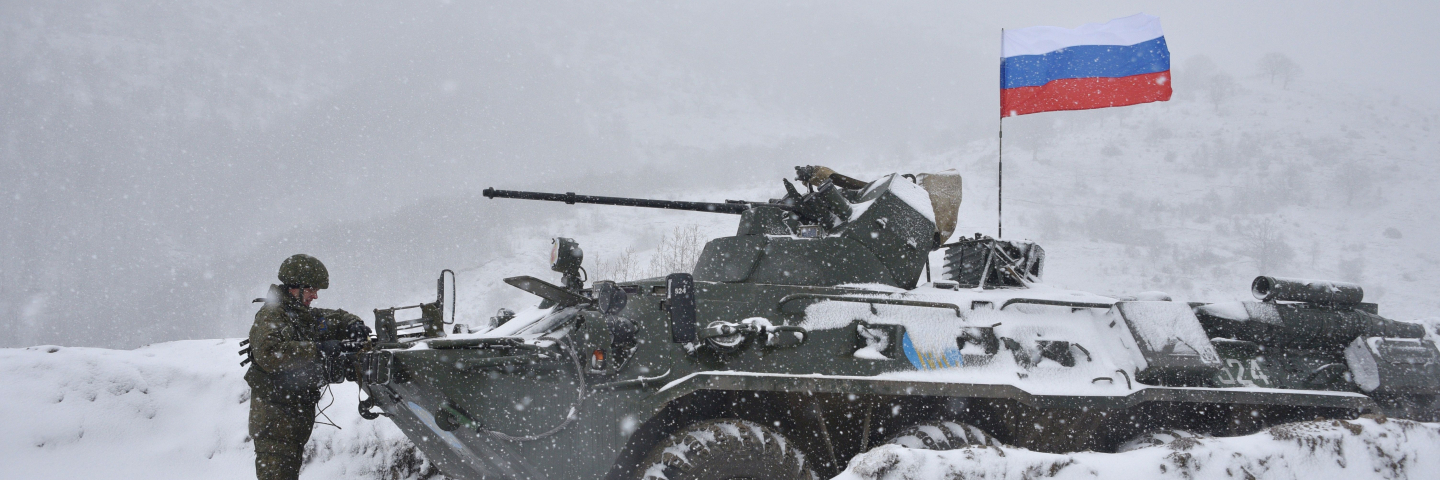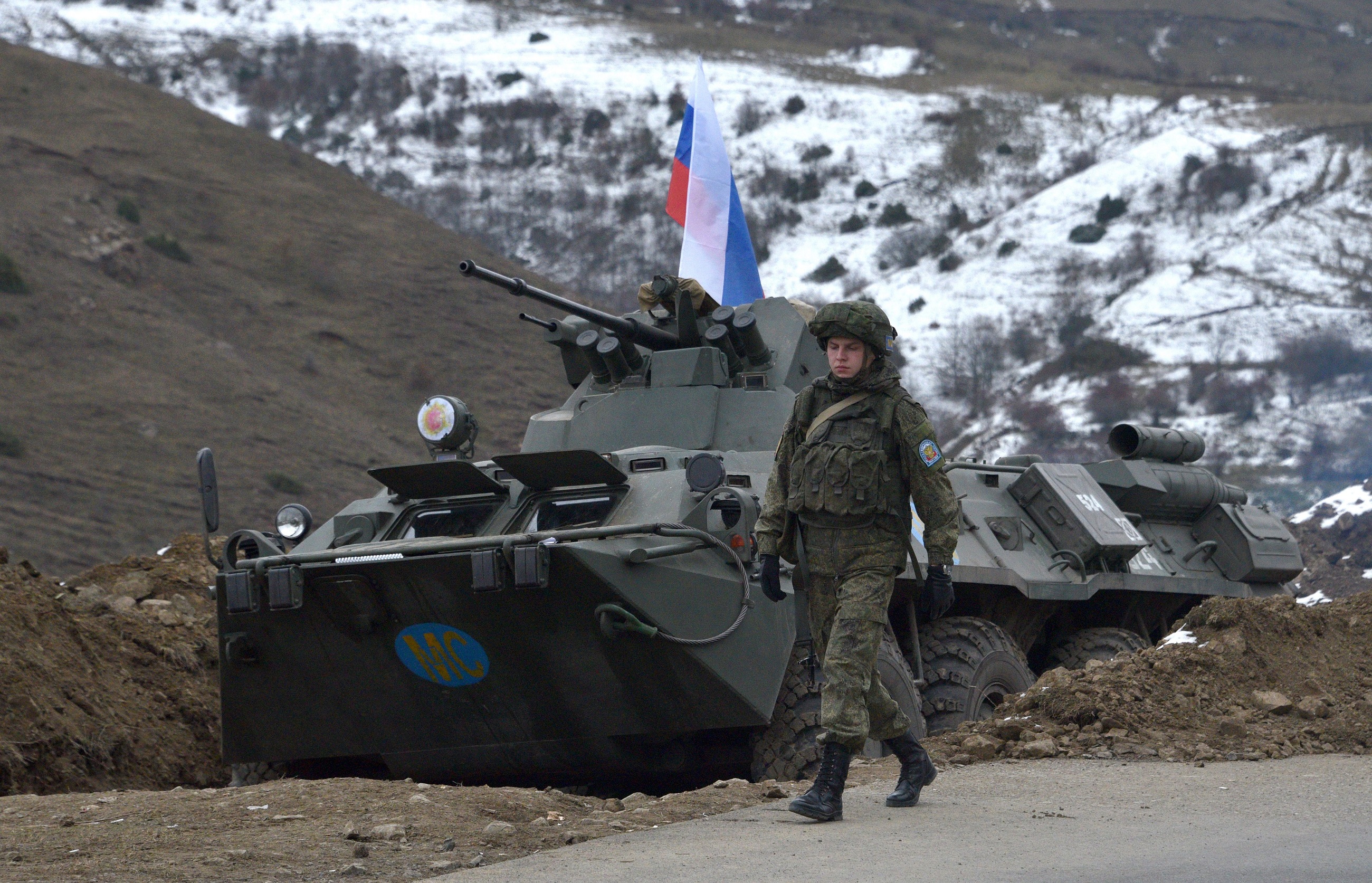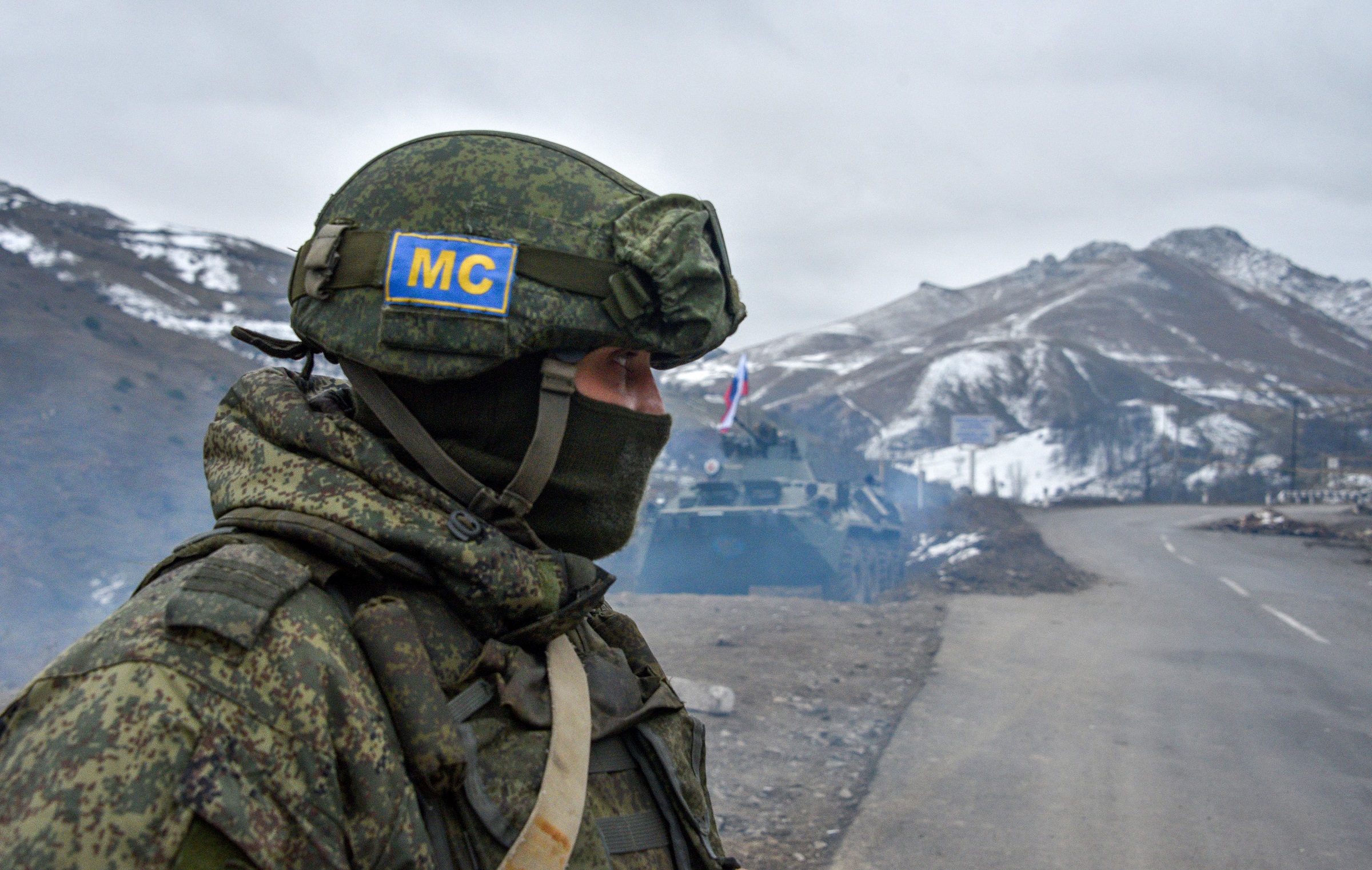
Russian Crisis Behavior, Nagorno-Karabakh and Turkey?
Introduction
On September 27, 2020, Azerbaijan initiated a war to retake the disputed Armenian-populated enclave of Nagorno-Karabakh and seven districts of Azerbaijan held by Armenian forces.1 The forty-four-day war resulted in a resounding defeat for the Armenian forces and only halted with the acceptance of a Russian-imposed agreement for a cessation of hostilities on November 9-10, 2020. Although the war was initially expected to unfold as a war of attrition with an eventual stalemate based on the advantages of terrain of the Armenian defenders, reality differed in terms of duration, intensity, and outcome.
Assessment
Both the timing and the terms of the Russian-crafted ceasefire agreement displayed a deft and sophisticated approach to coercive mediation by Moscow, acknowledging both the complexity of competing interests and the “red lines” of the combatants. We can point to four ways in which the Nagorno-Karabakh conflict strengthened Russia’s power and position.
First, Nagorno-Karabakh represents an important success in reasserting Russian influence in the post-Soviet space through its demonstration effect. Russia was able to assert its status as the decisive and indispensable deal-maker. Russia can use the peacekeeping operation as a mechanism to conduct direct mediation between Baku, Yerevan, and the remnants of Nagorno-Karabakh, rather than indirectly as the leading arms provider to both sides. Indeed, the greater the number of disagreements between Azerbaijan and Armenia, the more indispensable Russian mediation and arbitration becomes. The convening power of Putin is demonstrated by his capacity to summon and cajole both Armenian Prime Minister Pashinyan and Azerbaijani President Aliyev to Moscow to accept the implementation of the ceasefire. Whereas Nagorno-Karabakh was formerly the only conflict in the Former Soviet Union with no Russian presence, Russia now has military bases in all three states in the South Caucasus (over 11,000 troops) and expanded its economic leverage through its presence in policing transport corridors (Megri and Lachin). The Russian narrative that “Color Revolutions”— such as the “Velvet Revolution” that brought Prime Minster Pashinyan to power in 2018—end in violence and defeat is reinforced.
Second, a Western vision of the Caucasus—with a pro-Western Georgia and Azerbaijan and an increasingly pro-Western Armenia after the 2018 revolution—has faded, if not failed. The OSCE’s mediating Minsk Group has accepted and legitimized Russia’s diplomatic initiative, as co-chairs France and the U.S. were sidelined, presented as they were with the binary logic: legitimize the Russian peacekeeping operation as a fait accompli, and with it the creation of a potential Russian protectorate, or accept continued warfare with a likely humanitarian catastrophe. Two authoritarian states (Azerbaijan and Turkey) militarily attacked a weak democracy (Armenia), which was saved from total defeat by a third authoritarian state (Russia). Democratization is undermined and reform is imperiled.

Russian soldiers of the peacekeeping force man a checkpoint on a road outside the town of Stepanakert on November 26, 2020, after six weeks of fighting between Armenia and Azerbaijan over the disputed Nagorno-Karabakh region. - A Moscow-brokered peace deal was announced on November 10 after Azerbaijan's military overwhelmed Armenian separatist forces and threatened to advance on Karabakh's main city Stepanakert.
Third, Russia’s peacekeeping operation represents a top-down alternative illiberal approach to peace. It demonstrates that authoritarian models can be effective (Chinese expert analytical communities reportedly embrace this conclusion) and deployed more widely and more often. The German mantra of “there can be no military solution” is false. Russia’s peacekeeping operation was rapidly deployed, and exerts control over multiple domains: humanitarian, political, military power, and informational. The peacekeeping operation does not share control with civil-society or other actors and has no need for any external mandate (UN, OSCE, CSTO), etc.) If after five years the peacekeeping operation ends, the risk that the conflict will resume may increase and this possibility serves as lingering leverage over Armenia.
Fourth, Turkey won the war for Azerbaijan but lost the peace to Russia. Turkey sold Bayraktar TB2 attack drones to Azerbaijan, shared signals intelligence and military advisers, provided logistical help, and supplied proxy forces. Sergei Naryshkin, the head of Russia’s SVR, declared that Turkish-backed proxy jihadi terrorists should not be deployed to Azerbaijan and Russia and enforced this “red line” by launching attacks on a Feylak-i Sham (“Sham Legion”) training camp and headquarters in Idlib. Nagorno-Karabakh now tops a long list of places where Russia and Turkey compete, including Syria, Libya, the eastern Mediterranean and Cyprus, the Black Sea and Ukraine, Central Asia, the Balkans, and East Africa. However, increased Russian-Turkish tensions are mitigated by open channels of communication and a history of managing brinkmanship through pragmatic transactionalism, as well as a seemingly anti-Western alignment.
The Kremlin calculus discounted or downplayed several factors raised by analysts as potentially salient: the financial costs of the peacekeeping operation; the weakening of the credibility of CSTO guarantees; the prospect of Armenian public opinion turning against Russia; and uncertainties over the undefined status of Nagorno-Karabakh and the Russian peacekeeping operation itself. Russia bets that “a little bit of Turkey is better than a lot of the West,” particularly as Turkey appears over-extended with a weak economy. Russia may be concerned, however, about potential new outbreaks of fighting (Armenian radicals launching revenge attacks or the Azeri state provoking clashes with deniability to restart a military campaign?) and a Turkish military foothold in the South Caucasus. As the ceasefire upheld uti possidetis claims,2 this may have ramifications for Russia’s management of conflicts around Crimea and Donbas in Ukraine, South Ossetia, and Abkhazia in Georgia and Transnistria in Moldova.

Russian soldiers of the peacekeeping force man a checkpoint on a road outside the town of Stepanakert on November 26, 2020, after six weeks of fighting between Armenia and Azerbaijan over the disputed Nagorno-Karabakh region. - A Moscow-brokered peace deal was announced on November 10 after Azerbaijan's military overwhelmed Armenian separatist forces and threatened to advance on Karabakh's main city Stepanakert.
Conclusions
The clear loser of the conflict was Armenia. Armenia no longer guarantees security in Nagorno-Karabakh. It failed to counter Azerbaijan in the field. Its efforts to coerce Russia into supporting it by targeting Azeri critical national infrastructure outside of the conflict zone (“Doomsday Plan”), thereby causing an Azeri attack on Armenia proper, also failed. Armenia was forced to accept military defeat in order to avoid outright political-strategic annihilation. Armenia and Nagorno-Karabakh are now fully dependent on Russian security guarantees and Armenia is now even more firmly locked within the Russian orbit, as a virtual supplicant and subordinate Russian garrison state.
The clear victor of the conflict was Azerbaijan, as victory increased regime legitimation, at least in the short-term, with official narratives highlighting the necessity of a strongman authoritarian leader. Finally emerging from his father’s (and predecessor’s) shadow, Aliyev achieved his own victory while maintaining relations with Russia and strengthening ties with Turkey, although he remains precariously balanced between both. At the same time, the timing of the ceasefire between the capture of Shusha and imminent capitulation of Stepanakert, allowed Aliyev to avoid responsibility for a humanitarian disaster and subsequent ethnic cleansing, as well as fighting in winter.
Turkish narratives claim not only regional leadership but also future leadership in the Islamic world. Turkey has inserted itself into the South Caucasus as a de facto power broker and a challenger of Russian hegemony and Russia’s notion of a “sphere of privileged interest.” Turkey has solidified ties with Azerbaijan, demonstrating an ability to project power at low cost and appeared to effectively deter Russia from wholesale support for Armenia. Turkish power projection comes at Russian expense. Russia’s escalation of effort to manage the conflict places it—post-November 10, 2020—in a riskier position than Turkey. Over the longer term, the peacekeeping operation irritates Azerbaijan and reminds Armenia of its humiliating dependence. Turkey can capitalize on both these dynamics.
For Academic Citation
Richard Giragosian, David G. Lewis and Graeme P. Herd, “Russian Crisis Behavior, Nagorno-Karabakh and Turkey?” Marshall Center Security Perspectives, no. 19, January 2021, https://www.marshallcenter.org/en/publications/perspectives/russian-crisis-behavior-nagorno-karabakh-and-turkey-0.
Notes
1 This Perspectives is a summary of the first “Russian Hybrid Seminar Series” (RHSS), a new GCMC initiative aimed at bringing together subject matter experts to discuss Russia’s evolving strategic behavior and risk calculus. The first seminar was held on January 19, 2021.
2 Uti possidetis is “a principle in international law that recognizes a peace treaty between parties as vesting each with the territory and property under its control unless otherwise stipulated.” https://www.merriam-webster.com/legal/uti%20possidetis, accessed January 21, 2021.
About the Authors
Richard Giragosian is the Founding Director of the Regional Studies Center (RSC), an independent “think tank” located in Armenia, and serves as a visiting professor at the College of Europe’s Natolin Campus. He served as a professional staff member of the Joint Economic Committee (JEC) of the U.S. Congress and the committee’s principal staffer for the former Soviet Union and China; he also served as the committee liaison to the Central Intelligence Agency (CIA) and the Defense Intelligence Agency (DIA). From 2002-2006, Giragosian was a guest lecturer for the U.S. Army Special Forces at the John F. Kennedy Special Warfare Center and School at Fort Bragg, NC, and has participated in various research projects for the Naval Post-Graduate School (NPS), the U.S. Navy’s Asia-Pacific Center for Security Studies (APCSS), and for the U.S. Air Force Special Operations School.
David G. Lewis is Associate Professor of International Relations at the University of Exeter. David’s research interests include international peace and conflict studies, with a regional focus on Russia and other post-Soviet states. He is the author of numerous articles and books on Russia and Eurasia, including most recently Russia’s New Authoritarianism: Putin and the Politics of Order (Edinburgh University Press, 2020).
Graeme P. Herd is a Professor of Transnational Security Studies and Research and Policy Analysis Department Chair at the George C. Marshall European Center for Security Studies (GCMC). From January 2021, Dr. Herd directs a new GCMC Russia Hybrid Seminar Series, which focuses on Russian risk calculus, red lines, and crisis behavior and their implications for policy responses by the United States, Germany, friends and allies.
The George C. Marshall European Center for Security Studies
The George C. Marshall European Center for Security Studies in Garmisch-Partenkirchen, Germany, a German-American partnership, is committed to creating and enhancing worldwide networks to address global and regional security challenges. The Marshall Center offers fifteen resident programs designed to promote peaceful, whole of government approaches to address today’s most pressing security challenges. Since its creation in 1992, the Marshall Center’s alumni network has grown to include over 14,000 professionals from 157 countries. More information on the Marshall Center can be found online at www.marshallcenter.org.
The articles in the Perspectives series reflect the views of the authors and are not necessarily the official policy of the United States, Germany, or any other governments.